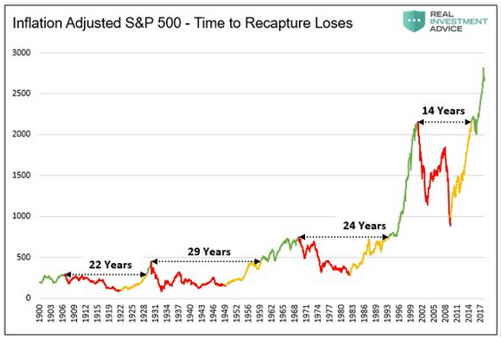B.S. articles about investing are everywhere.
They appear, unsolicited, in your mailbox, your inbox, your Facebook feed, your Twitter feed, and even in the mainstream financial media outlets like CNBC, Bloomberg, Barron's, and many others.
How good are you at detecting B.S. when you read an article or blog post about investing? This series of articles is intended to fine-tune your natural B.S. Detector so that you will at least have a fighting chance to avoid the tricks, traps, and snow-jobs that permeate the financial media landscape.
In this installment I'll unpack the B.S. in an article that has gotten a ton of media attention due to its endorsement by a prominent blogger and popular talking head on mainstream media outlets.
My attorney warned me that I might get in trouble by offending some prominent people in the business, but I don't care. My intention is to educate, and that means exposing B.S.and speaking the truth, no matter what.
The shocking revelation that Dollar Cost Averaging (DCA) under-performs Lump Sum Investing (LS)
You can read the full article here. The headline screams:
This data analysis is blowing minds in the finance world — and could change how you invest
How's that for a click bait headline? Pretty good, in my opinion. But the article, and the one it links to, is loaded with flaws. And the entire premise is sketchy at best, and misleading at worst. Allow me to explain.
The crux of the article is that it's more profitable for an investor who has come into a big chunk of money (in this case $2.4 million) to plunk it all down at once instead of spreading it out over time (in this case 24 months). LS is superior to DCA, in other words.
But is this really true? I don't think so, and I'll tell you why.
First, who comes into a $2.4 million chunk of money to invest? Lottery winners? How many are there of those? Kids who inherit daddy's fortune? Again, how many are there? Business owners who get bought out by Google or Amazon? Give me a break.
That leaves the rest of us working stiffs who struggle to sock away a few hundred bucks a month in our savings accounts or retirement plans. So the first objection I have is that the target audience of this article is extremely small.
But that doesn't matter, because even for these fortunate souls, LS investing is not the panacea this article makes it out to be.
The Elephant in the Room
What do you think will happen to that $2.4 million if you put it all in the market anywhere near the top? According to the article, the passage of time will take care of everything. But time is the key factor here.
Take a good look at the chart below. It shows that a LS investor lost a lot of time waiting for the market to get back to his original investment price. 22 years, 29 years, 24 years, 14 years. Does it make any sense to put all that money into the market at once when the market is expensive relative to history? Not in my opinion.
Most investors are risk averse, and those who claim otherwise are either fooling themselves or lacking proper information about market history.
Consider that, while from 1926 through 2018 the S&P 500 Index returned 10% per year, it did so while experiencing volatility of almost 20% per year. In addition, it experienced four severe crashes:
- September 1929-June 1932 (loss of 83.2%).
- January 1973-September 1974 (loss of 42.6%).
- March 2000-September 2002 (loss of 38.3%).
- October 2007-February 2009 (loss of 51.3%).
Let's take the first example - the market top of 1929. If you had followed the advice of the author you would have invested all $2.4 million at or near the top. It's true that eventually, with the passage of time, you would be made whole again. But you would have to wait 29 years! Does that make any sense at all?
Next we look at 1973. It would have taken 24 years to get back to break-even.
If you invested that money at the beginning of 2000, it took 14 years to break-even.
And if you invested in late 2007 it took 5 years to be made whole again.
Lessons Learned
Unless you're willing to give up 5, 14, 22, or 29 years of your life waiting for the market to bail you out, I have a better way. Be aware of market valuation and do not ever invest an entire lump sum of money when prices are high.
When prices are low, go ahead and use the LS approach. It may still take years to recover from market downturns, but it won't be as costly as investing near the top of a market cycle (which is where we are today).
Time is the most precious resource we have. We're all given a finite amount of it, and we can't buy more no matter how wealthy we might be. The B.S. in this article is the way the author ignores the value of time.
Preview of coming installments of this series
I've already covered the myth of Buy & Hold as the best strategy for everyone, at all times. And I covered the myth of stock-picking as the surest way to make a killing in the market.
In upcoming installments I'll debunk the Elliott Wave Theory and other purely technical investment strategies. I'll also tackle so-called "Evidence-Based" investment strategies and expose them for what they really are - a way for investment advisers and fund managers to capture your money and turn it into an annuity with them as the primary beneficiary.

